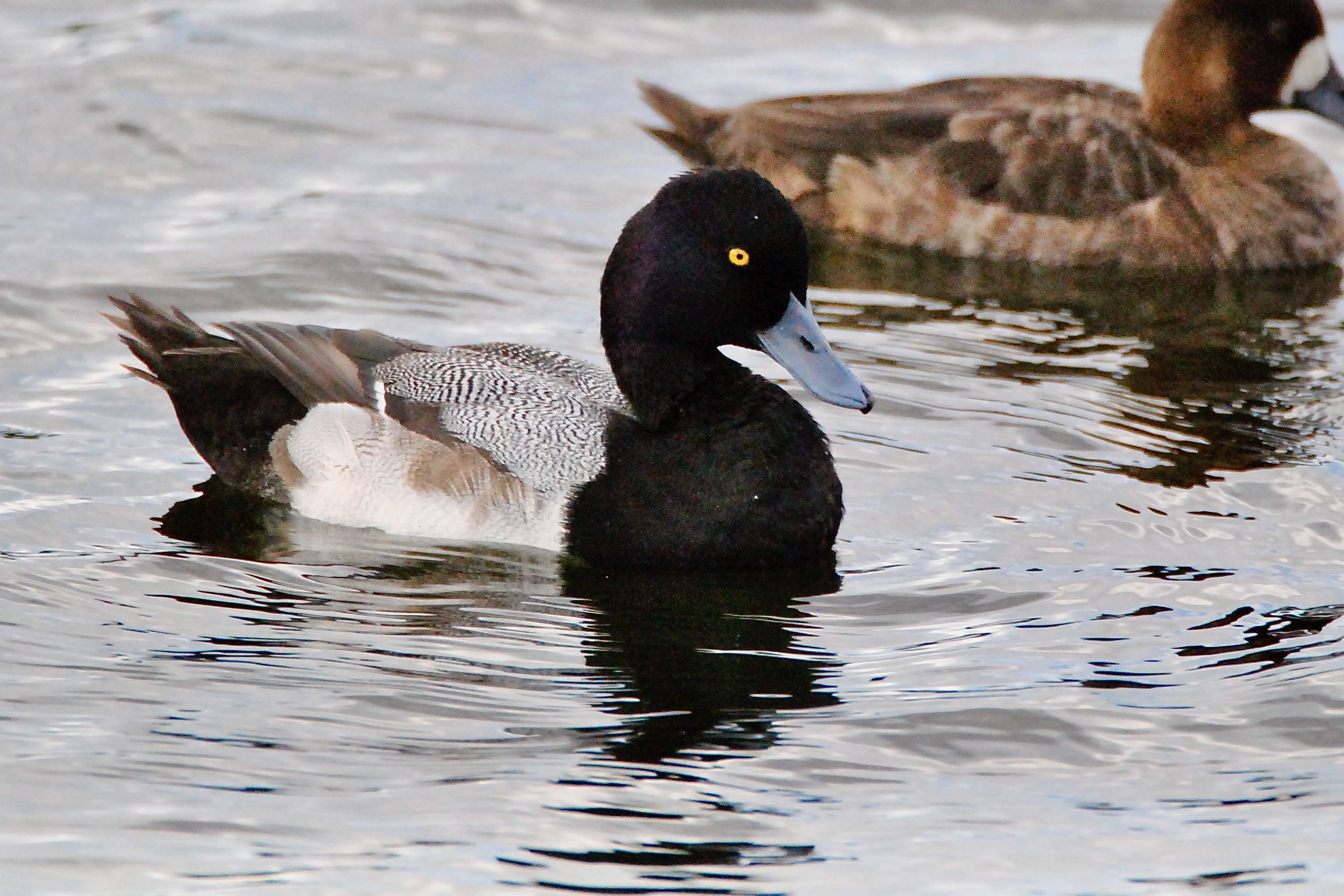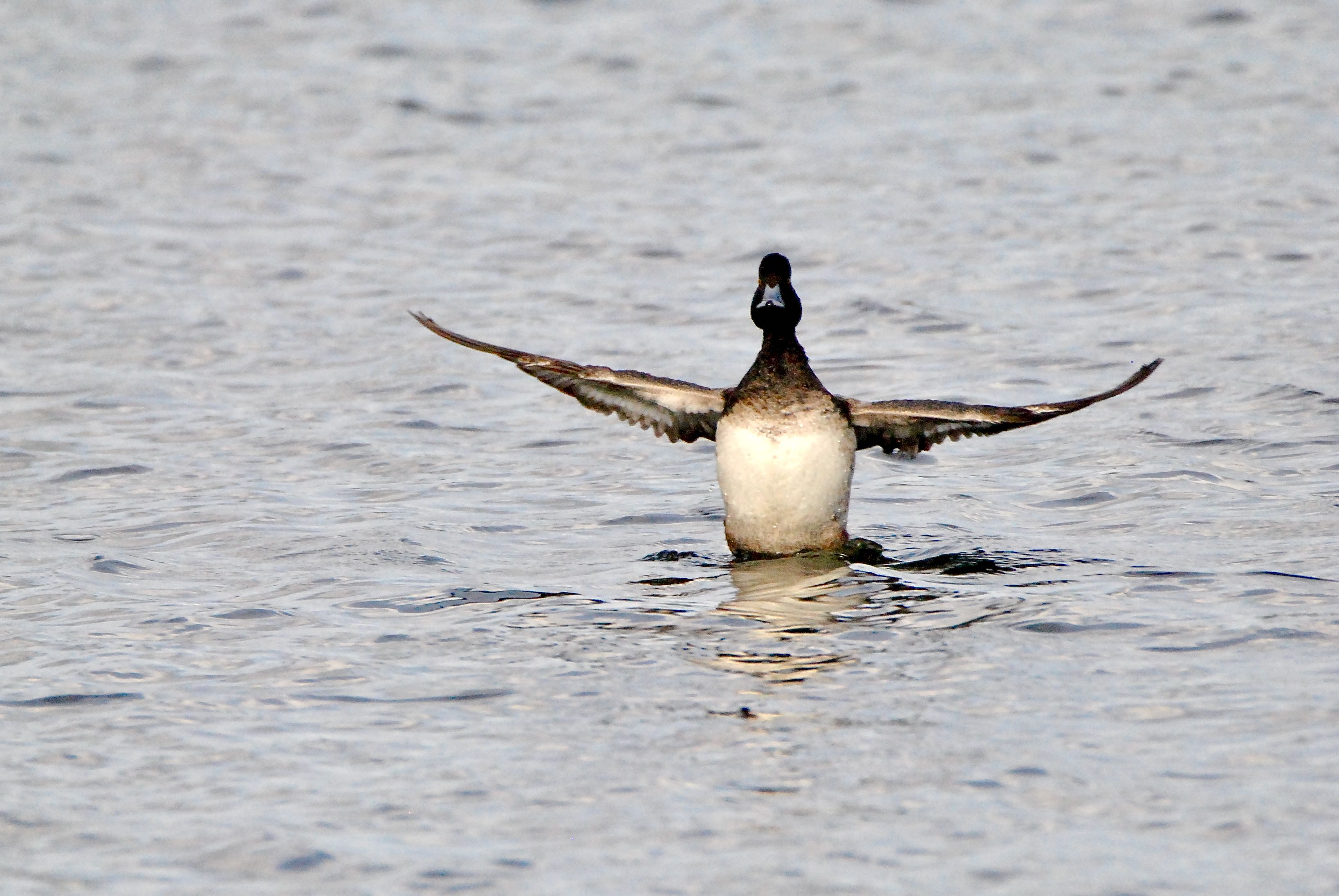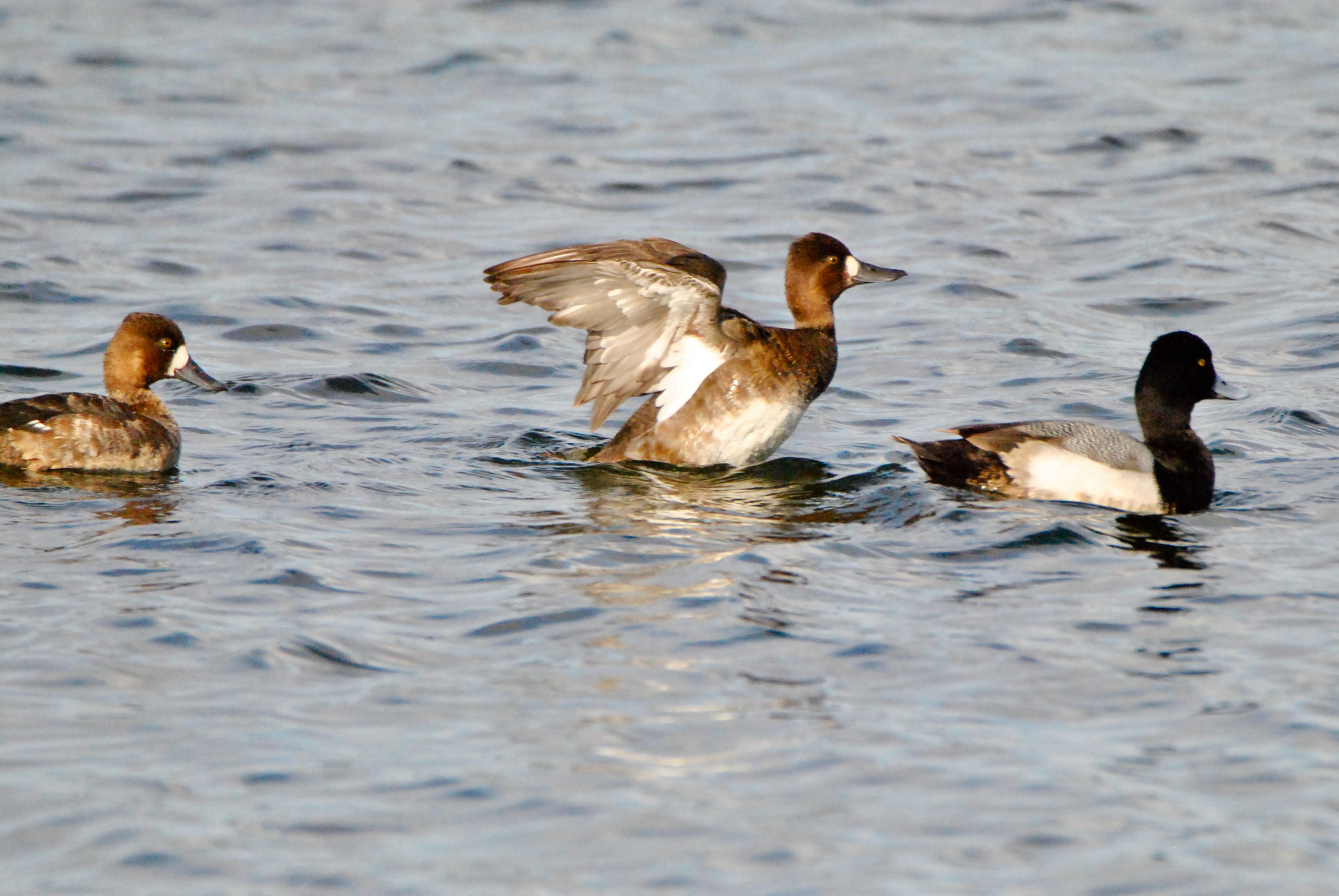
Lesser scaup, photographed at Green Cay Nature Center, Boynton Beach, Palm Beach County, in February 2016.
You're looking at North America's most abundant diving duck, the lesser scaup, Aythya affinis. Combined with their close cousin, the greater scaup, Aythya marila, they're the third-most common ducks, diving or dabbling, on the continent after the mallard and blue-winged teal.
And the two scaups are probably the most difficult pairs of duck species to decypher. Both are winter visitors to Florida, but unlike in summer when the flocks of the two species are often seen together, scaups hang out in totally different habitats, the lesser, our guy, in freshwater lakes and ponds, the greater in protected coastal waters. Lesser scaups are also far more numerous than their cousins and more likely to be spotted in this part of the globe. The lesser scaup is strictly a bird of the western hemisphere; the greater scaup's range spans Eurasia as well.
There are some physical differences between the two; the lesser scaup is about 20 percent smaller than its cousin, but at a distance and unless you happen to have both species on hand, that's not a lot of help. Lesser scaups also have a slight crest toward the back of their heads, which might not be apparent depending on what the duck is doing. Greater scaups lack the crest altogether. Most other differences are similarly subtle.
By the way, there are two theories as to the origin of scaup (pronounced skawp). Theory one: scaup is a Scottish variant of the northern English word, scalp, used in reference to a bed of shellfish and a likely place for these ducks to feed. Theory two: it comes from the call the birds make. Take your pick, but theory 2 seems to be trending these days.
Lesser scaups have a body length between 15 and 18 inches, with a wingspan that approaches 30 inches. Males are slightly larger than females and are the more colorful of the two. Males are blackish purple on the head and neck, with a light blue bill that has a black tip. The bill is the inspiration for two other common names for this bird, little bluebill and broadbill. Wings are white; the back is mix of white and fine gray. The belly is white, the tail is black. Females are brownish, with a prominent white patch on their faces.
The lesser scaup is mostly a migrating bird. Most of the population spends the summer breeding season in the central Rockies into northern Canada and Alaska. In the fall, they retreat south into the lower Mississippi River valley, along the Gulf Coast into Florida and along both the Pacific and Atlantic coasts. They also migrate as far as the northern tip of South America. The map for the greater scaup extends farther north and into Eurasia in summer and into northern Florida during migration. Audubon says they're a rare offshore visitor to South Florida during winter.
As we noted above, these birds forage mostly by diving through the water. They become completely submerged as they hunt for a meal. Dabblers, like the blue-winged teal or the mottled duck, go face down while foraging, but their rears remain above the water. Think of a human bobbing for apples. Lesser scaups mostly eat vegetation and seeds but crustaceans, mollusks and aquatic bugs are also on their menu. Scaup young are able to dive on a limited basis the day they hatch.
Scaup nests are bowls of vegetation built on land or over water. Females lay a single clutch each year of six to 15 eggs, which require threee to four weeks of incubation. The young fledge in 45 to 50 days, but they will stay with their parents for a time afterwards. Although the International Union for Conservation of Nature ranks the bird as least concern, scaup numbers have been declining in recent years and no one seems to know why. Theories include loss of habitat and a decline in the number of surviving females.
Lesser scaups are members of Anatidae, the duck family.
Green Cay Nature Center



